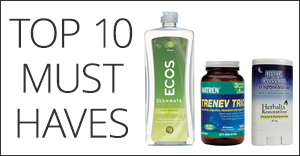It’s time to answer the question that everybody wants to know: are grass-fed and organic foods really worth it?
According to an analysis from Consumer Reports, some organic foods can cost up to 47 percent more than conventional foods. This is a huge difference for many families who are on a strict budget.
Let’s take a look at the benefits of grass-fed meats and organic foods.
Less exposure to pesticides
First of all, organic foods reduce exposure to pesticides. A new study from Boise State University showed that organic foods significantly reduce pesticide exposure.
“For most Americans, diet is the primary source of OP pesticide exposure,” explained Cynthia Curl, the lead author in the study. “The study suggests that by eating organically grown versions of those foods highest in pesticide residues, we can make a measurable difference in the levels of pesticides in our bodies.”
More nutrition
Organic foods also typically contain a higher concentration of vitamins and minerals.
A 2010 study published in PLOS One showed that organic strawberries contained more nutrients than conventional strawberries.
According to an article from Mother Earth News, organic free-range eggs are more nutritionally rich when compared to commercial eggs. They contain about two-thirds more vitamin A, two times more omega-3, three times more vitamin E, and seven times more beta-carotene.
What about grass-fed meats?
There is also a growing body of research on the benefits of grass-fed meats versus conventionally grown meat.
The latest research from Cambridge Journals stated the following about grass-fed meat and milk:
. Both organic milk and meat contain around 50% more beneficial omega-3 fatty acids than conventionally produced products
. Organic meat had slightly lower concentrations of two saturated fats (myristic and palmitic acid) that are linked to an increased risk of cardiovascular disease
. Organic milk contains 40% more conjugated linoleic acid (CLA)
. Organic milk contains slightly higher concentrations of iron, Vitamin E and some carotenoids
. Conventional milk contained 74% more of the essential mineral iodine and slightly more selenium
So the results are in, grass-fed and organic are really worth it. If you need some guidance, take a look at our piece on foods that you must eat organic if you are not able to afford everything organic.
Note: None of the information in our website is intended to diagnose, treat, cure or prevent any illness or disease. The content on our website is for educational purposes only.
DON’T FORGET to sign up for our weekly newsletter to get our latest articles, updates, free recipes and giveaways.
Organic foods reduce exposure to pesticides.
For top 10 foods you must eat organic.
For the truth behind 8 foods to avoid at the supermarket.
REFERENCES:
1. “Study Helps Predict Pesticide Exposure in Diet.” Boise State University. Boise State University, 05 Feb. 2015. Web. 5 Mar 2016.
2. “Study Prove Organic and Grass-Fed Meats Are Worth the Price.” Mercola.com. N.p., n.d. Web. 05 Mar. 2016.
3. “Cost of Organic Food.” Consumer Reports. N.p., n.d. Web. 05 Mar. 2016.
4. “Fruit and Soil Quality of Organic and Conventional Strawberry Agroecosystems.” PLOS ONE. PLOS ONE, n.d. Web. 05 Mar. 2016.
5. “Meet Real Free-Range Eggs.” Mother Earth News. N.p., n.d. Web. 05 Mar. 2016.
6. “New Study Finds Clears Differences between Organic and Non-organic Milk and Meat.” Cambridge Journals Blog. N.p., n.d. Web. 05 Mar. 2016.

















